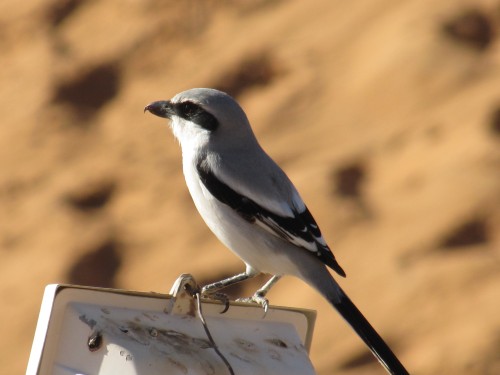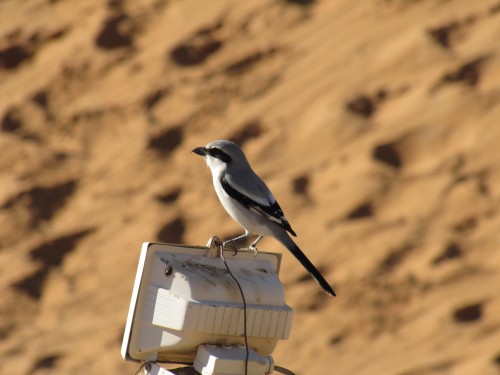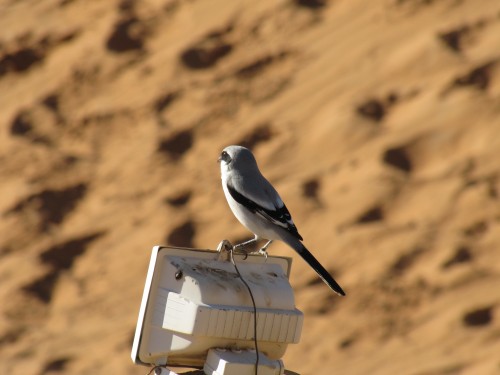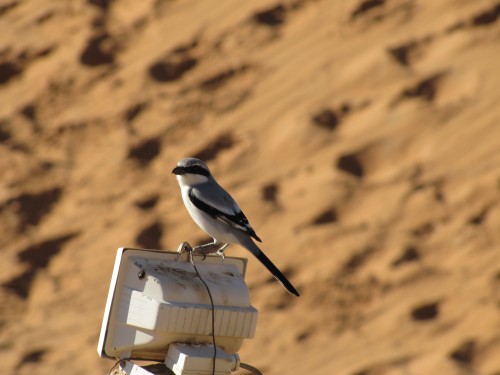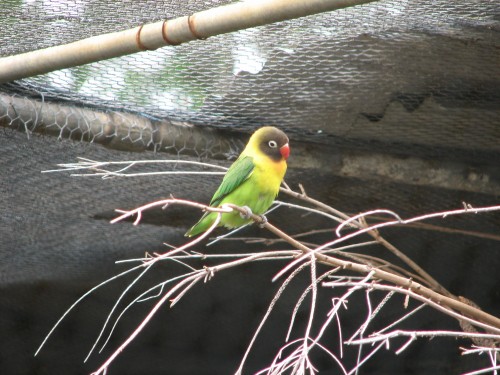Southern Grey Shrike, Morocco
Several years ago we visited Morocco and fell in love with the country. It is a land of great contrasts and beauty, and we found the people to be friendly and welcoming. During our tour, we visited many wonderful and beautiful places. One of those places was the Sahara Desert. It did not disappoint. Over recent weeks, I have posted a few of the bird photos I took at the time.
The highlight of our visit to the desert was a camel ride into the Sahara on sunset. This was on Christmas Eve, so it certainly was a Christmas with a difference and certainly one to remember. We slept in a Berber tent in the desert overnight. The next morning – Christmas Day – we rode back to a local hotel where we had a late breakfast. While we were eating I managed some good photos of several local bird species. You can read about them here and here and here.
Today I feature another bird species seen at that location, the beautiful Southern Grey Shrike. This bird posed cooperatively for me on a light fitting just a few metres from where we were sitting. I love it when the birds pose like that – so considerate of them. This species, a member of the shrike family of birds, is found in northern Africa (except in the heart of the Sahara), Spain and through to Pakistan and India in the east. It is a passerine bird of medium size. It eats rodents, insects and will even take small birds as a part of its diet.
Further reading:
- Southern Grey Shrike – the article on Wikipedia
- Eurasian Collared Dove – an article about another species I photographed in the same location
- White-crowned Black Wheatear in the Sahara
Yellow-collared Lovebird, Adelaide Zoo
The Adelaide Zoo has an excellent collection of Australian and exotic birds in their aviaries and I enjoy the challenge of photographing them, especially where I have to shoot through the wire netting. The photo of a Yellow-collared Lovebird above turned out quite well, despite the netting in the way. It is much easier in the walk-through aviaries of course.
The various species of lovebirds available through pet shops and those that specialise in just birds make them quite popular here in Australia. My opinion of lovebirds is somewhat unfavourable, I must admit. Many years ago our neighbours when we were living in another town had quite a number of lovebirds in a smallish cage right next to our fence. All I can remember is that they were constantly squabbling and screeching.
On a more positive note, I will acknowledge that they are beautiful birds. I can see the attraction of having them as pets, either in a cage or in a bigger aviary.
They are native to Tanzania in southern Africa.
I have written about this species on another occasion (click here).
Grenadier Weaver, Adelaide Zoo
There are many spectacular and beautiful birds in Africa. The weaver family of birds are among the more colourful and interesting of them. Adelaide Zoo in South Australia – my home zoo – has a small collection of Grenadier Weavers, as shown in today’s photos. The colourful male is a spectacular bird indeed, especially when in breeding plumage which ranges from bright orange through to red.
Of peculiar interest in relation to this species is a closely related species, the Red Bishopbird. This member of the finch family, also native to Africa, is a commonly kept aviary bird. In the 1920s some of these either escaped or were released from captivity not more than 20km from where I live. A small population survived along the banks of the River Murray for some years, and they were even featured in some earlier field guides. This small population has obviously died out as there have been no reports of any birds since the late 1950s.
Pied Crows, Ethiopia
During our visit to Ethiopia last December the common corvid I observed everywhere was the Pied Crow (Corvis albus) shown in today’s photos. In the grounds of the school where my daughter was teaching they were very common, sometimes numbering 30 – 50 in the gardens, on the oval or flying noisily overhead. They were not slow at picking through food scraps left by the students and were very tame, often allowing me to approach to within a metre or two.
Pied Crows are found in a range of habitats from urban, farming, grasslands and woodlands as well as along lakes and rivers. It is found throughout Ethiopia as well as Uganda, Kenya and Tanzania and in parts of neighbouring countries. In fact, it is found in most areas south of the Sahara throughout southern Africa, making it the most widespread of any crow or raven in Africa.
For my Australian readers, the Pied Crow is about the same size as the Little Raven and Little Crow, but smaller than the Australian Raven. Its call is just as mournful but harsher and throatier than our Little Raven.
Ostriches in South Australia
If I want to see some Ostriches here in South Australia I only have to drive for about ten minutes. Ostriches are not native Australian birds, of course, because they have been introduced into Australia from Africa.
The Ostriches I can see are actually in the open range Monarto Zoo near Adelaide, South Australia. The zoo features many animals from Africa, including a small flock of Ostriches.
The Ostrich is actually on the official list of Australian birds. In the nineteenth century they were brought to Australia and farmed in a number of localities. They were primarily bred for their feathers, the plumes being much in demand for decorating ladies’ hats. The fashion didn’t last and many Ostriches were released or escaped into the wild, forming small breeding colonies. I know of two such areas: the Coorong south of here and north of Port Augusta. I believe there is still a very small remnant population near Port Augusta but I never managed to see any despite living there for many years.
